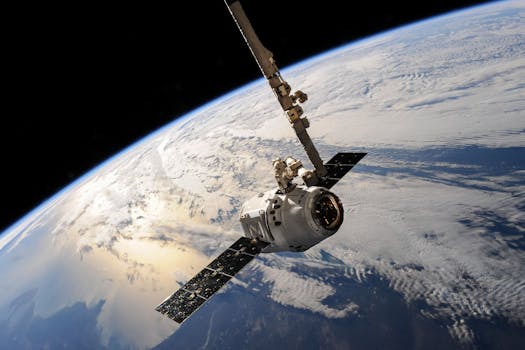
MEO Satellites: Revolutionizing Global Communication with Medium Earth Orbit Technology
MEO satellites, or Medium Earth Orbit satellites, are a type of satellite that operates at an altitude of approximately 2,000 to 36,000 kilometers above the Earth’s surface. This range allows MEO satellites to provide a unique combination of global coverage, high-speed data transfer, and low latency, making them an attractive solution for a variety of applications, including navigation, communication, and Earth observation.
At the beginning of our discussion about MEO satellites, it is essential to understand the significance of Medium Earth Orbit technology in the context of global communication. The MEO satellite system has been gaining popularity in recent years due to its ability to offer faster and more reliable connections compared to traditional Geostationary Orbit (GEO) satellites. With the increasing demand for high-speed data transfer and low latency, MEO satellites have become a crucial component of modern satellite communication systems.
How MEO Satellites Work
MEO satellites work by using a network of satellites in medium Earth orbit to provide continuous coverage of the Earth’s surface. Each satellite in the network communicates with a subset of the other satellites, as well as with ground stations, to provide a seamless and global communication service. The satellites use advanced technology, such as spot beams and frequency reuse, to maximize the efficiency of the system and minimize interference.
The MEO satellite system offers several advantages over traditional GEO satellites, including lower latency, higher data transfer rates, and improved connectivity in areas with limited or no terrestrial infrastructure. These benefits make MEO satellites an attractive solution for a variety of applications, including maritime communication, aviation, and rural broadband.
Applications of MEO Satellites
MEO satellites have a wide range of applications, including navigation, communication, and Earth observation. In the field of navigation, MEO satellites are used to provide location information and timing signals, which are essential for a variety of applications, including aviation, maritime, and land transportation. The Global Positioning System (GPS) and the European Galileo system are two examples of navigation systems that use MEO satellites.
In the field of communication, MEO satellites are used to provide broadband internet access, mobile phone connectivity, and other communication services. The O3b satellite constellation, which is owned by Other 3 Billion, is an example of a MEO satellite system that provides broadband internet access to underserved communities around the world.
Benefits and Challenges of MEO Satellites
The benefits of MEO satellites include faster and more reliable connections, lower latency, and improved connectivity in areas with limited or no terrestrial infrastructure. However, the development and deployment of MEO satellites also pose several challenges, including the high cost of launching and operating a satellite constellation, the risk of interference from other satellite systems, and the need for advanced technology to manage the complex network of satellites and ground stations.
Despite these challenges, the demand for MEO satellites is increasing, driven by the growing need for high-speed data transfer, low latency, and global connectivity. As the technology continues to evolve, we can expect to see new and innovative applications of MEO satellites in the future, including the use of satellite-based systems for the Internet of Things (IoT), smart cities, and other emerging technologies.
Conclusion
In conclusion, MEO satellites are revolutionizing the way we communicate globally, offering faster and more reliable connections, lower latency, and improved connectivity in areas with limited or no terrestrial infrastructure. With the increasing demand for high-speed data transfer and low latency, MEO satellites have become a crucial component of modern satellite communication systems. As the technology continues to evolve, we can expect to see new and innovative applications of MEO satellites in the future, transforming the way we live, work, and communicate.




